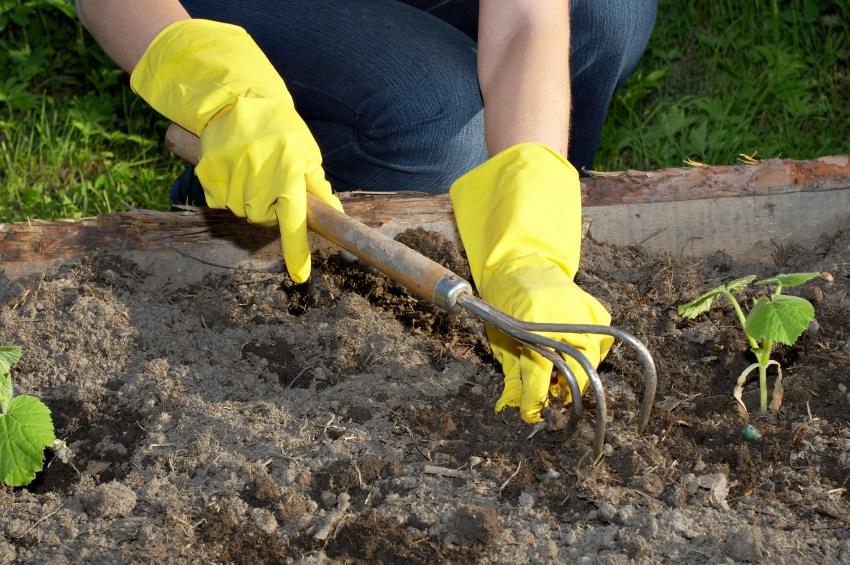Green beans (Phaseolus vulgaris) are among the most common vegetables people grow in the home garden. They produce a fine crop within sixty days, making them faster than many vegetable crops, and the beans can be eaten fresh, frozen, or canned.
When it comes to green beans, you can opt for pole beans, which grow on trellises, fences, or poles; or bush beans, which are compact varieties that require no support. I’ve tried both, but I prefer pole beans because they produce a greater overall yield for a longer period of time. (And my kids like to hide among the trellises.) Bush beans are a bit like determinate tomatoes. They produce a big yield within a few weeks, making them ideal if your only goal is to harvest beans for processing.
Most years, I’ve had no trouble with growing beans. On the odd occasion, though, I’ve experienced problems with growth, disease, and pests. Below, you’ll find information on the most common bean problems and how to avoid or fix them.
Seeds don’t germinate. Beans are warm-season crops, and they don’t like cold, wet soil. Wait to plant them until daytime air temperatures are at least 70 degrees. Avoid planting them too deeply, especially in the spring when the soil is still cold. Plant them no more than one inch deep in the spring. If you have a short growing season, try building raised beds, which warms the soil earlier in the spring so you can plant sooner. For fall plantings, you can plant them up to two inches deep, especially if your soil is dry. Water the soil frequently so it stays moist but not soggy one inch beneath the surface. In dry soils, the seeds won’t germinate. Forget the old-time advice of soaking bean seeds before planting them. Bean seeds do have a hard seed coat, but they don’t need to be soaked. Doing so often cracks the seeds and damages them so they rot.
Young seedlings have dark, water-stained spots on their leaves or collapse. This condition is known as damping off and is caused by high humidity levels and cold, damp soils. Remove the plants and try again in a few weeks when the soil is warmer.
Young seedlings are stunted and don’t recover. Again, this is caused by cold temperatures. The seedlings might eventually start growing, but you’re probably better off taking them out and replanting them in warm soil.
The seedlings fall over and die. Check the stems. If the stems seem as if they were cut off, it’s probably because they were. Cutworms have been at work in your garden. Till the soil to destroy them and remove any garden debris and weeds, which provides shelter for the pests. Place cardboard collars around young seedlings as soon as they emerge from the soil. Bury the collars three inches deep in the soil.
Deformed seedlings that lack leaves. Corn seed maggots have probably been feeding on your green beans. Remove the plants and cultivate the soil to destroy the pests. Replant in warm weather.
Yellowed, distorted leaves. Thrips, tiny black or brown insects, have been feeding on the leaves. These insects generally move on in a week or two and the plants recover on their own.
Large holes in the leaves. Bean leaf beetles have likely been at work in your garden. These small orange or red beetles can cause considerable damage. Handpick and destroy any you see. In the future, till the soil to at least six inches to destroy the larva. Spread a floating row cover over the beans immediately after planting to exclude the pests.
Curled or yellowed leaves. You might also notice a sticky substance on the leaves and ground, or a black powder, which is sooty mold. These symptoms indicate an aphid invasion. The tiny brown, red, or green insects damage beans by sucking the sap from the leaves and stems. They usually move on in a few weeks. In the meantime, try spraying the undersides of the leaves with a stream of water or coat the leaves with insecticidal soap. Ladybugs eat aphids, so you might be able to control them with these beneficial insects. Ants often farm aphids and eat the honeydew, so control the ants with ant barriers, and you’ll likely control the aphids too.
Skeletonized leaves. If nothing is left of the leaves but the veins and stems, you probably have Japanese beetles or Mexican bean beetles. Handpick these pests and drop them in a bucket of soapy water. To prevent their appearance, cultivate the soil to destroy any overwintering larva. Install floating row covers after planting.
White stippling or speckles on the upper sides of the leaves. The edges of the leaves may become yellowed or scorched. Leafhoppers, like aphids, are tiny insects that suck the juices from the beans. Prevent them with floating row covers. Treat infested plants with insecticidal soap.
Gray or white mold on the leaves, stems, and pods. This condition, white mold, is most prevalent in warm, humid conditions. Once beans are infected, the condition is fatal. Wet leaves can spread the disease, so use soaker hoses instead of overhead sprinklers. Avoid working in the garden while it’s wet. Space the beans so air circulates freely, and rotate crops so beans don’t grow in the same place year after year.
Water soaked spots on the leaves. You might also notice stunted growth or a white mold. This is caused by bacterial wilt, a fatal disease most prevalent in wet soils. Add compost and peat moss to improve drainage and avoid overwatering. Cucumber beetles can also spread the disease. Handpick them or treat them with rotenone. Again, floating row covers can keep them out.
Stunted, weak plants with yellow leaves. You may also notice red spots near the stems. These symptoms are usually caused by fusarium wilt, a disease that can live in the soil. Remove infected plants and rotate crops. If the disease continues, try solarizing the soil. Spread a clear sheet of plastic over the soil during the hottest period of the summer. Secure it tightly to the ground with rocks or pins. Leave it in place for four to six weeks. The high temperatures will kill the pathogens that cause this disease.
Shriveled water pods and brown to reddish streaks on the leaves and pods. Anthracnose is a fungal disease, which is spread through wet leaves. Use soaker hoses instead of overhead sprinklers and avoid working in a wet garden.
Stunted plants and mottled leaves. Mosaic virus is a fatal bean disease. If you notice these symptoms, remove the plants immediately and discard them. Rotate bean crops and choose disease-resistant varieties in the future.
Stunted plants with purple stems and veins. The leaves may also curl or grow downward. These symptoms indicate curly-top virus, a disease spread by leafhoppers and aphids. Remove infected plants. In the future, remove all weeds and garden debris and spray leaves with insecticidal soap to treat the insect pests.
Flowers not setting fruit. When nighttime temperatures drop below 55 degrees or daytime temperatures rise above 90, the flowers might drop without pollinating. Spread floating row covers over the plants during cold weather. In hot weather, your only recourse is to wait until temperatures cool. The beans will start producing again.













